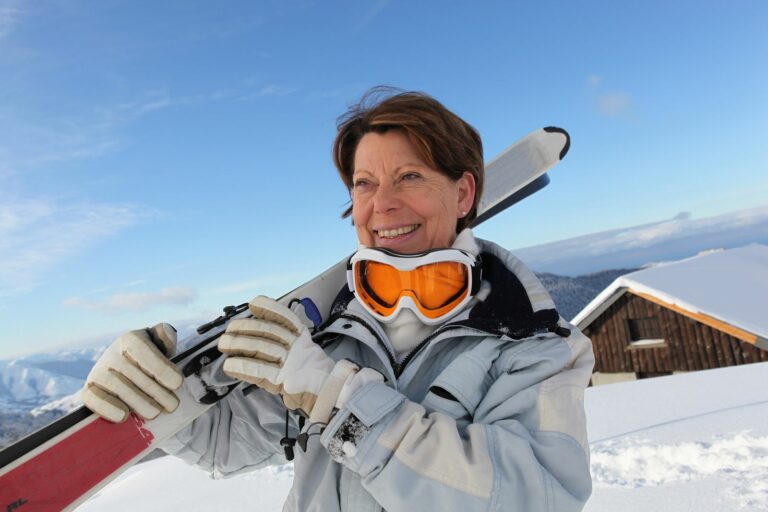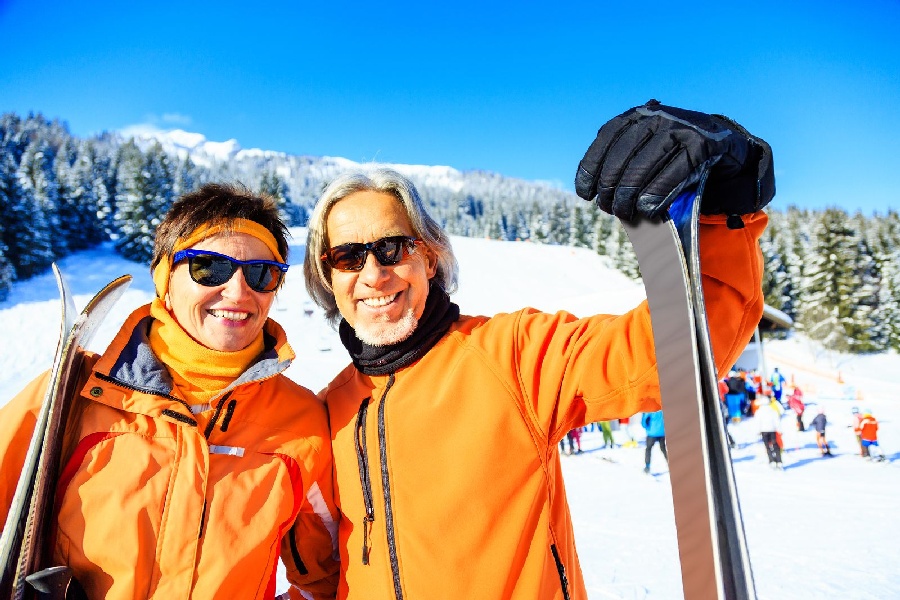
Attention “Seasoned” Skiers!
People of all ages can’t wait for ski season to begin so they can hit the slopes. In the past, it was unusual to see older skiers traversing down a mountain trail. But, nowadays, plenty of folks are still skiing into their “seasoned” years.
Undoubtedly, the time will come for everyone when skiing is no longer advisable. But when that arrives depends upon the individual. It’s a decision we must each answer for ourselves, perhaps with some helpful input from our doctors. But age doesn’t have to be the deciding factor. Health, strength, agility, stamina, coordination, balance … all must be considered.
Today, skiing at a modern ski area or resort is safer than ever before. Advances in technology have made ski equipment and chairlifts more efficient and protective. The grooming and maintenance of ski runs and trails have also improved. Even ski instruction has progressed over the years. Ski instructors now base their teaching on science and body mechanics, which helps make it possible for aging skiers to enjoy the sport longer. Proper preparation, equipment, location, and instruction are also crucial for any skier.
Older skiers should not be speeding down mountains or taking chances like they may have been attempted in their early days. When you get to a certain age, skiing is no longer about impressing someone else or taking risks. Skiing at a later age is about enjoying yourself in a smart, safe way.
Here are a few tips from “seasoned” skiers who still enjoy getting out there on the slopes wisely and safely.
Tips for skiing in your "seasoned" years…
- Prepare before hitting the slopes. Skiing is a physical sport and your body needs to be in reasonably good shape to enjoy it. Don’t expect your body to simply adjust to the demands of skiing. Exercise during the rest of the year and warm up your muscles and joints before hitting the slopes. Remember to stay hydrated while out on the slopes as well.
- Invest in the right equipment. Do not use old, outdated ski equipment. Get rid of the skis and boots you used a few decades ago. Modern skis and boots are built differently. Today’s skis are designed to be easier, safer, and perform better than those old, straighter, thinner, and longer skis of the past. Boots provide more support, comfort, and warmth, and function better with skis.
- Have your bindings adjusted by a professional. To ski safety and reduce the risk of injury, it’s vital for bindings to be adjusted properly. Height, weight, age, ability level, and boot length all affect how bindings should be adjusted. Most ski areas and resorts have a professional on staff who can adjust your bindings for you.
- Take a few lessons. Even if you’ve skied your entire life, it can be a good idea to take lessons tailored to your specific age group. You will learn some age-related skiing guidelines to follow that will help you avoid injury and allow you to remain active in the sport longer.
- Check weather and skiing conditions before heading out. Ski injuries are more likely to happen in bad weather when conditions are not good and visibility is low. Before going skiing, always find out if snow, sleet, fog, or any other bad weather is expected. Make sure the slopes have been groomed and check condition updates at the ski area or resort regularly between ski runs. Notices are often posted near the ski lift.
- Keep your doctor informed. Always let your doctor know if you are a regular skier or if you’re thinking about starting or returning to the sport. Talking with your doctor could save you from pain and injury. Your doctor knows you well and understands your abilities and limitations. If your doctor has recommendations to help you ski safely, follow them. If your doctor has valid reasons why you should not ski, accept what you can’t change. You can always find other activities to enjoy.


Age Adds Flavor
We are not old, we are seasoned!
Don’t forget to visit us on FACEBOOK!
